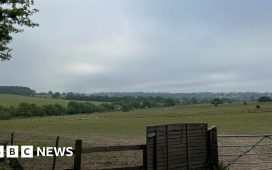Fabricated stories in the Sun blaming Liverpool fans for the Hillsborough stadium disaster are among examples that will be used in a parliamentary initiative to teach MPs to recognise misinformation and disinformation.
Other examples include a Russian bot campaign on Twitter, now X, that tried to use a photograph taken in the aftermath of the Westminster Bridge attack to stir up Islamophobic hatred.
Both are included in a course overseen by the House of Commons library that MPs and staff can sign up to as part of the “good information toolkit”, a collection of resources which the library said would help to avoid disinformation, and find accurate and reliable sources.
In the course, coverage in the Sun of the 1989 crush at Hillsborough that led to the deaths of 97 people is referred to under the heading “Fake news”.
“The Sun newspaper published a series of misleading and fabricated stories, placing much of the blame on Liverpool fans,” it states.
“The paper published a front-page apology and new report about the incident in 2012. Recently fake news, however, has been used as a highly debated and polarising term so we will stick to misinformation.”
Under the headline “misinformation”, the course highlights a social media meme that claimed potholes on the route under King Charles’s coach had been hastily filled in with sand for the coronation.
It adds: “The truth is, the council did it to keep the horses pulling the coach safe from drain holes. Notice the number of retweets and consider the reach of this claim. It’s easy to see how this can happen to all of us, in the private and professional sphere. It is not a new phenomenon but nowadays it is dramatically amplified by social media.”
The role of an X account called Texas LoneStar is used in the course as an example of “false context”, which it says is “when genuine content is shared with false contextual information”.
After the Westminster Bridge attack in 2017, the account shared a photograph of a young Muslim woman walking along the bridge looking at her phone, and wrongly accused her of ignoring the injured. The course explains to MPs that the woman was interviewed afterwards and explained she was traumatised, on the phone with a loved one and, out of respect, not looking at the victims.
The Texas LoneStar account was part of a Russian disinformation campaign and had since been shut down, it adds.
An example of disinformation is cited from 1888, during the murders in Whitechapel by Jack the Ripper. Two young men in Kensington were heard to shout “arrest of Jack the Ripper tonight” at the top of their voices as they sought to sell newspapers. The police were called and the men were taken to court over the spreading of false information.
As part of teaching techniques and tools to help spot misinformation, the course takes the example of a fabricated piece of content that was made to look like an article by the Guardian columnist George Monbiot.
“I’ve caughtCovid for the 23rd time despite having had dozens of boosters,” read the fake headline. The course lists inconsistent punctuation, the use of polarising language, an inconsistent tone and exaggerated statements as signs that should raise suspicions.
The initiative, which was quietly launched inside parliament last month, is endorsed by Full Fact, an organisation of factcheckers and campaigners.
The House of Commons library already runs a research request service which allows MPs to request bespoke, impartial research from subject specialists. This can include factchecking information that MPs have encountered, or verifying whether sources are reliable.
Moves to provide more resources to help MPs recognise misinformation were mentioned in parliament by the Commons leader, Penny Mordaunt, who chastised the former Tory MP Andrew Bridgen, who is now an independent, for his comments on the Covid-19 vaccine.










